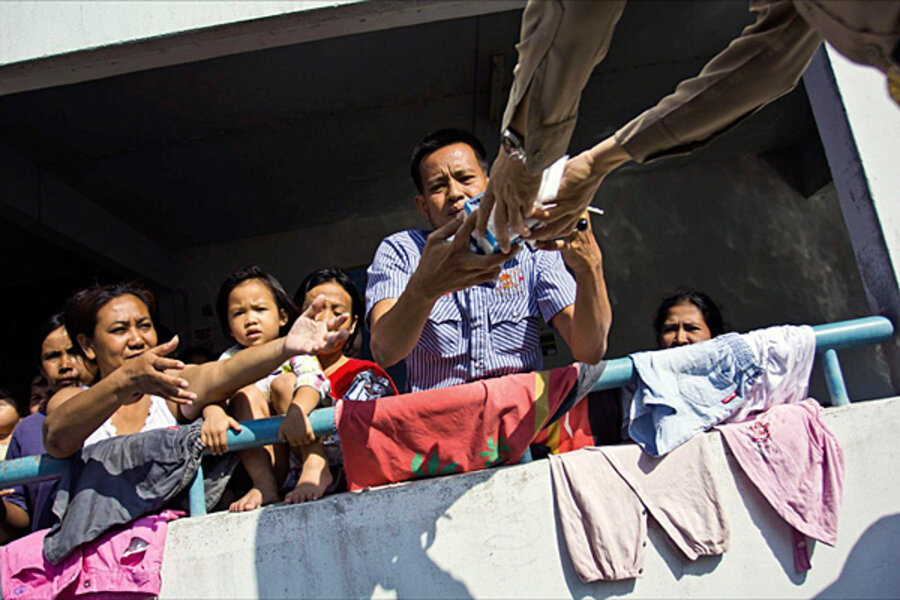Thailand floods: floating toilets, makeshift jet skis, and doggie lifejackets
| Bangkok, Thailand
Ask people living in the flooded suburbs of Bangkok where they go to the bathroom, and you’ll likely get answers such as "the school over there," "in a plastic bag," or the rather implausible "I just hold it."
Thousands of people in Thailand have been living in filthy floodwater for some three months – the most devastating flood the country has seen in decades caused by unusually heavy monsoon rains. More than 400 people have died in the Thailand floods, and hundreds of thousands have fled their homes.
As a protracted battle to stay dry unfolds until the massive pool of stinking water and garbage drains into the Gulf of Thailand, which could take months still, even simple things like disposing of human waste can become complicated.
But when it comes to adapting to flood complications, Thais are getting inventive, frequently joking in Thai spirit, that they have become amphibians.
Cotto, a Thai sanitation company, has designed floating toilets people can use safely and – believe it or not – hygienically, no matter how deep their own lavatories are submerged, and treat the waste water with micro organisms before it’s discharged.
And some jury-rigged contraptions have become Internet sensations through Twitter and Facebook. From jet skis made out of a barrel, bike parts, and a lawnmower; to improvised flotation devices made from styrofoam blocks to float cars to safety, and ideas for do-it-yourself doggy life-jackets made from empty plastic bottles, old t-shirts, and rubber bands; people are utilizing the Internet to create useful ways to ameliorate their situation and then help share the know-how.
Baan Arsa Jaidee, an organization borne of the Thai Health Foundation, has been holding workshops at its headquarters in Bangkok, which also doubles as a food and water storage and distribution center.
“They’ve been very inventive with minimal resources, using plastic bottles and polymer piping to create very sturdy rafts," says volunteer and operations manager Brian Beattie. He adds that he’s impressed by the creativity of people experiencing a crisis who are even inventive with how they spreading information through social networks and cartoons. (Check out this great youtube cartoon explaining what's going on. It's in Thai, with English subtitles.)
Students at the technical university are especially amazing he says, making incredibly simple, incredibly useful items using what’s at hand. “And they’re trying to pass the knowledge on.”
Students from Mongkhut University in Bangkok with Baan Arsa Jaidee have created a flood alarm using piping and a ping-pong ball. Rising water presses the ball up, which triggers an alarm, says Beattie. “Rather than having to stay awake every night because you’re worried the water will arrive when you’re asleep, you can rest easy, and you can have enough warning to get your family to safety.”
The center has also been distributing homemade toilets made from plastic footstools and plastic bags and holds classes on how to make EM (Effective Microorganisms) balls, which can be put in pools of standing water to treat bacteria and microbes.
As the Thai government seems to continually miscalculate flood related risk – Thailand’s Disease Control Department announced today that though communicable diseases have been detected, the stinking flood water posed, “no serious threat” – victims are turning to groups such as Baan Arsa Jaidee and with a little resourcefulness, remain self-reliant.





